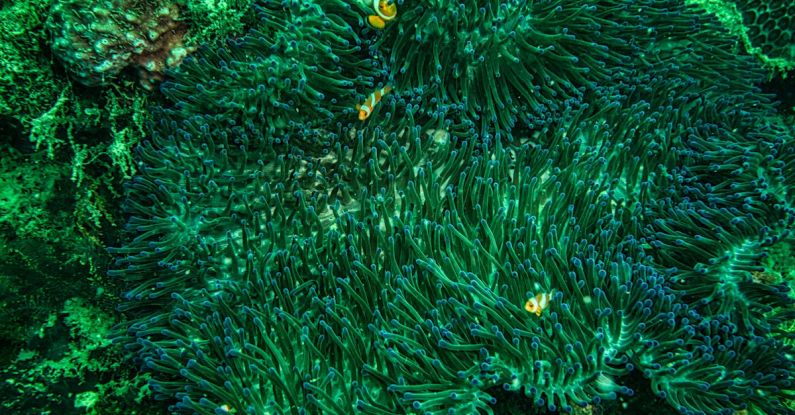In the intricate underwater world of coral reefs, one of the most fascinating and mutually beneficial relationships exists between the clownfish and the anemone. This symbiotic partnership, often portrayed in popular culture due to its appearance in the animated film Finding Nemo, goes beyond just the visual appeal it offers. Let’s delve into the captivating dynamics of this unique bond between these two marine creatures.
The Anemone’s Protective Shelter
Anemones are stationary marine creatures belonging to the same family as jellyfish and corals. These colorful and often venomous creatures provide shelter and protection for clownfish. The tentacles of the anemone contain stinging cells called nematocysts, which serve as a defense mechanism against predators. While these tentacles can be harmful to other fish, clownfish have developed a special mucus layer that makes them immune to the anemone’s sting.
In return for the safe haven provided by the anemone, clownfish help to attract prey towards the anemone with their bright colors and movements. This mutually beneficial arrangement ensures that both species have a constant supply of food and protection in the bustling ecosystem of the coral reef.
Clownfish: The Cleaners of the Anemone
One of the most crucial roles that clownfish play in their relationship with anemones is acting as cleaners. Anemones are susceptible to parasites and debris that can hinder their ability to catch food effectively. Clownfish help to keep the anemone’s tentacles clean by removing parasites and algae, thus ensuring that the anemone remains healthy and can continue to provide shelter for the clownfish.
The clownfish’s cleaning behavior is not only beneficial for the anemone but also serves as a source of food for the clownfish. They feed on the parasites and algae they remove from the anemone, creating a self-sustaining cycle within their shared habitat.
Communication and Recognition
Clownfish and anemones have evolved a unique system of communication and recognition that allows them to coexist harmoniously. Each species recognizes the other through chemical cues, with clownfish being able to detect and differentiate between various species of anemones based on these cues.
Additionally, clownfish exhibit specific behaviors that signal their intentions to the anemone. For example, when a clownfish wants to establish a bond with an anemone, it will gently touch its tentacles with different parts of its body to acclimate the anemone to its presence. This communication helps to prevent the anemone from perceiving the clownfish as a threat, ultimately leading to the formation of a successful partnership.
The Impact of Climate Change
While the symbiotic relationship between clownfish and anemones has evolved over millions of years, it is not immune to the threats posed by human activities such as climate change. Rising sea temperatures, ocean acidification, and pollution are all factors that can negatively impact coral reefs and the organisms that depend on them for survival.
As coral reefs face increasing stress, the delicate balance of the clownfish-anemone relationship is at risk. Bleaching events, where corals expel the algae living in their tissues, can lead to the decline of anemone populations, consequently affecting the availability of suitable habitats for clownfish.
Protecting this symbiotic relationship requires concerted efforts to conserve coral reefs and mitigate the impacts of climate change. By safeguarding the health of coral ecosystems, we can ensure the continuation of the unique bond between clownfish and anemones for future generations to marvel at.
Preserving a Precious Partnership
The symbiotic relationship between clownfish and anemones serves as a testament to the interconnectedness of life in the ocean. Through their mutually beneficial interactions, these two species have forged a bond that highlights the beauty and complexity of nature’s intricate web.
As we strive to protect our oceans and the diverse marine life they support, let us not forget the significance of preserving partnerships like that of the clownfish and the anemone. By understanding and valuing these symbiotic relationships, we can work towards a more sustainable future where marine ecosystems thrive and flourish in all their wondrous diversity.





